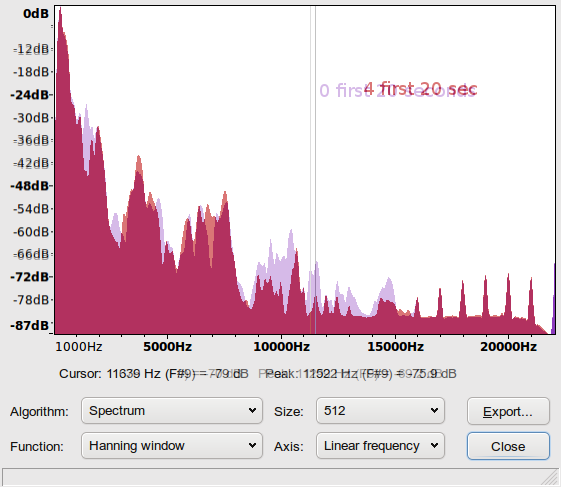|
|
Here's a question for you audiophiles on the list. How much effort is 10dB of muffling worth?
I've expanded on my experiments with phononic bandgap filters, and I think I've fairly conclusively demonstrated up to 15dB of attenutation in the frequency ranges between 8kHz and 12kHz. I used the run-up video that Mike Wills provided for us a few weeks back (thanks Mike), and I was a little more methodical than last time.
For those that don't remember, a phononic bandgap filter is created by geometric arrangement of dissimillar materials, with the goal of filtering specific vibration frequencies. It appears that 1/2" diameter tubes, arranged in a grid with 1" centers does a nice job of attenuating frequencies in the 8kH to 12kHz range. I set up my simulated muffler...a wooden shell with PVC filter elements. I stuck a couple speakers in the inlet side, and a microphone on the outlet side. In this setup, there is going to be all sorts of losses from the conversion from an electronic signal to sound in the speaker, then conversion of sound to an electronics signal in the microphone. Comparing the original to the recorded muffled sound, which I did in the first experiment, is not valid.
What I did this time instead, is to compare several recordings. Each with one less row of filter elements than the last, until I was measuring an empty box. The empty box measurement is the control that lets me know if I'm doing anything with the array of tubes. What I found was that each row of tubes provide a significant attenuation in the frequencies between 8kHz and 12kHz. The ones that give us the weed-wacker sound. I determined this by taking a time sample across each of the 5 recordings and having Audacity plot the spectrum.
I have an xcf file created by The Gimp ( a free image editing software). The xcf format allows you to keep an image in layers. Each of the plots is in a separate layer, and by playing with the opacity individual layers, you can easily see where the attenuation occurs. The file is 465kB so I can't post it to the list, but if anyone is interested, I'll be happy to send it direct. I'll do a writeup with links to the audio files "real soon now". I have attached a flatten image showing the 0 row run, against the 4 row run. The 0 run is the lighter purple shade. There are some some frequencies where the 4 row would be louder....around 4kHz and 7kHz, but I think the attenuation of those frequencies around 10kHz would be most beneficial.
--
Ernest Christley, President
Ernest@TechnicalTakedown.com
TechnicalTakedown, LLC
www.TechnicalTakedown.com
101 Steep Bank Dr.
Cary, NC 27518
(919) 741-9397

PhononicBandgapAttenuation.png
|
|